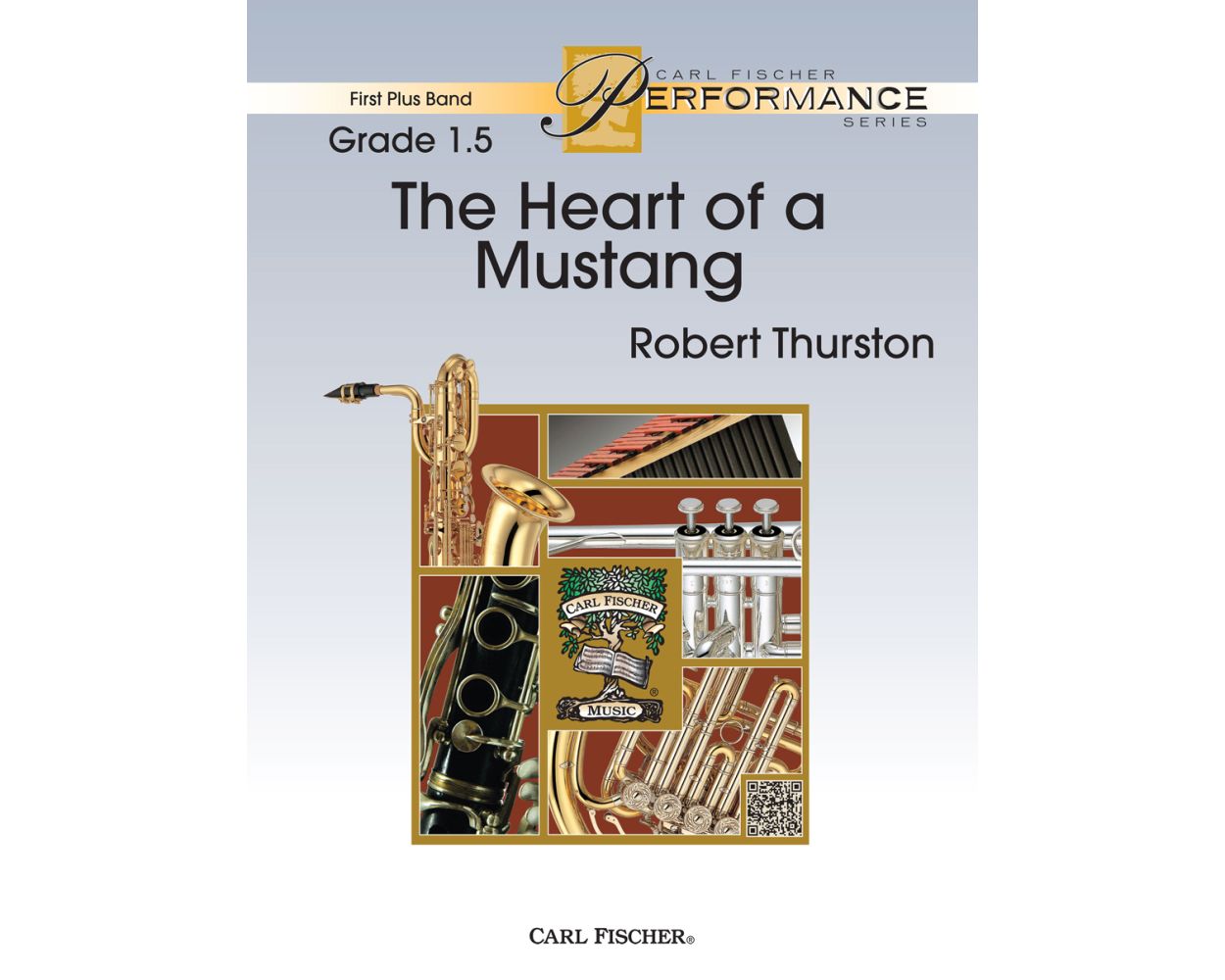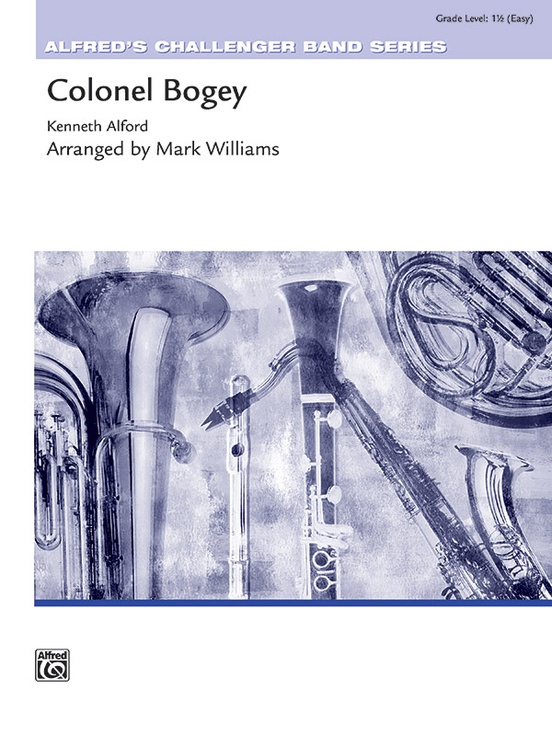Results
-
£104.99
Trumpets and Bridges (Concert Band - Score and Parts)
Trumpets and Bridges was composed to celebrate the opening ofa new bridge linking Austria with Germany. This bridge is a symbolfor the meeting of cultures and the lifting of borders. In the thirdmillennium, geographical and political borders are losing theirmeaning and often they cause senseless suffering. Music is the bestevidence against the necessity of borders. Music is more global andinternational than any other language, because it is understood inthe heart, where no boundaries exist. 03:20
Estimated dispatch 7-14 working days
-
 £50.00
£50.00The Holly and the Ivy
This setting of the beautiful holiday classic is accessible for very young bands. Its memorable melody, notated in a comfortable range, is passed around the sections of ensemble as the other parts play accompaniments that are interesting, yet not difficult. Written in bridge form, the piece begins softly, with soft sleigh bells and clarinets below the break, adding flutes, then brass, then building to a minor section and a very short percussion feature, making it a great opportunity introduce students to this form!
Estimated dispatch 12-14 working days
-
 £46.00
£46.00The Heart of a Mustang
The Heart of a Mustang evokes the musical imagery of free-roaming horses galloping across the open plains. The music suggests an intense urgency embodying the struggles faced by mustangs in the wild. Heartbeat rhythms serve as the musical bridge throughout in this solid choice for contest and festival performances.
Estimated dispatch 12-14 working days
-
 £49.95
£49.95Colonel Bogey - Kenneth J. Alford / arr. Mark Williams
Everyone is going to want to whistle along with this well-known march made famous from its use in the film Bridge over the River Kwai. This easy-to-play arrangement begins with a single snare drum, 2-part flutes and an optional whistling part but quickly opens up into a full treatment of this great march. Highly recommended.
Estimated dispatch 3-5 working days
-
 £193.20
£193.20CASTRVM - Lionel Beltrán-Cecilia
CASTRVM is a symphonic episode inspired by four of the main civilizations that have coexisted over time in Ulldecona's Castle. With its melodies and sound effects, the composer tries to transport the listener through a trip to four uninterrupted movements, from the beginnings of this small settlement, creating a natural atmosphere recreated by the voice and the singing of birds to take us into the history with the first inhabitants, the Iberians, giving strength to the introduction of the composition, to move on to the time of the Andalusians, which with a melody in the form of a dance marked by percussion will transport us to take a walk in the surroundings of its circular tower. Next, and with strength, we arrive at the medieval and Christian period, marked in the score by the brass instruments, in this fragment we find moments that take us into the church of "Santa Mara de los ngeles", with melodies that evoke resonance and pomposity, continuing until we find the immense square tower, symbol of the fortress and homage, finally used as a prison and arsenal of those times. Then, there is a small slow march that will move us to some measures of strong stridency to finish with the whole section of low brass having its great moment of prominence, down to we reach the last part, Qna, a name that is recited during the musical piece and one of the names given in the past to the area that could be seen from the castle, where the change of location of the new town is recreated leaving the castle site, but always looking at it with respect and admiration as at the beginning of what is now the current Ulldecona, in this part, the composer plays a bit with a very well-known and significant melody for the inhabitants of Ulldecona, the "Jota Vieja", first making a reflex effect of all its melody and then only with the first six notes of this one, which builds a bridge until reaching the march and, later, the grand finale of this symphonic episode. The work was commissioned by Ulldecona Town Council and the Ulldecona Music Band, led by its conductor Joan Nadal i Girona, to commemorate the 800th anniversary of the donation of the Town Charter of Ulldecona "the old" (1222-2022), as part of the PATRIMONIUM 20.22 programme, "La Banda (Sonora) del Castell" (The soundtrack of the Castle).CASTRVM consists of: I.Iberians: stone and ironII.AndalusiansIII.The square tower: fortress and homageIV.Qna
Estimated dispatch 7-14 working days
-
 £134.99
£134.99Gollum (from The Lord of the Rings) - Johan de Meij
Johan de Meij's first symphony The Lord of the Rings is based on the trilogy of that name by J.R.R. Tolkien. This book has fascinated many millions of readers since its publication in 1955. The symphony consists of five separate movements, each illustrating a personage or an important episode from the book. The movements are: I. GANDALF (The Wizard) II. LOTHLORIEN (The Elvenwood) III. GOLLUM (Smagol) IV. JOURNEY IN THE DARK a. The Mines of Moria b. The Bridge of Khazad-Dm V. HOBBITS The symphony was written in the period between March 1984 and December 1987, and had its premire in Brussels on 15th March 1988, performed by The Royal Band of the Belgian Guides under the baton of Norbert Nozy. In 1989, the Symphony The Lord of the Rings was awarded first prize in the Sudler International Composition Competition in Chicago. In 2001, the orchestral version was premiered by the Rotterdam Philharmonic Orchestra and was recorded by the London Symphony Orchestra.
Estimated dispatch 7-14 working days
-
 £134.99
£134.99Journey in the Dark (from The Lord of the Rings) - Johan de Meij
Johan de Meij's first symphony The Lord of the Rings is based on the trilogy of that name by J.R.R. Tolkien. This book has fascinated many millions of readers since its publication in 1955. The symphony consists of five separate movements, each illustrating a personage or an important episode from the book. The movements are: I. GANDALF (The Wizard) II. LOTHLORIEN (The Elvenwood) III. GOLLUM (Smagol) IV. JOURNEY IN THE DARK a. The Mines of Moria b. The Bridge of Khazad-Dm V. HOBBITS The symphony was written in the period between March 1984 and December 1987, and had its premire in Brussels on 15th March 1988, performed by The Royal Band of the Belgian Guides under the baton of Norbert Nozy. In 1989, the Symphony The Lord of the Rings was awarded first prize in the Sudler International Composition Competition in Chicago. In 2001, the orchestral version was premiered by the Rotterdam Philharmonic Orchestra and was recorded by the London Symphony Orchestra.
Estimated dispatch 7-14 working days
-
 £134.99
£134.99Lothlrien (from The Lord of the Rings) - Johan de Meij
Johan de Meij's first symphony The Lord of the Rings is based on the trilogy of that name by J.R.R. Tolkien. This book has fascinated many millions of readers since its publication in 1955. The symphony consists of five separate movements, each illustrating a personage or an important episode from the book. The movements are: I. GANDALF (The Wizard) II. LOTHLORIEN (The Elvenwood) III. GOLLUM (Smagol) IV. JOURNEY IN THE DARK a. The Mines of Moria b. The Bridge of Khazad-Dm V. HOBBITS The symphony was written in the period between March 1984 and December 1987, and had its premire in Brussels on 15th March 1988, performed by The Royal Band of the Belgian Guides under the baton of Norbert Nozy. In 1989, the Symphony The Lord of the Rings was awarded first prize in the Sudler International Composition Competition in Chicago. In 2001, the orchestral version was premiered by the Rotterdam Philharmonic Orchestra and was recorded by the London Symphony Orchestra.
Estimated dispatch 7-14 working days
-
 £514.99
£514.99Symphony No. 1 The Lord of the Rings (complete ed) - Johan de Meij
Johan de Meij's first symphony The Lord of the Rings is based on the trilogy of that name by J.R.R. Tolkien. This book has fascinated many millions of readers since its publication in 1955. The symphony consists of five separate movements, each illustrating a personage or an important episode from the book. The movements are: I. GANDALF (The Wizard) II. LOTHLORIEN (The Elvenwood) III. GOLLUM (Smagol) IV. JOURNEY IN THE DARK a. The Mines of Moria b. The Bridge of Khazad-Dm V. HOBBITS The symphony was written in the period between March 1984 and December 1987, and had its premire in Brussels on 15th March 1988, performed by The Royal Band of the Belgian Guides under the baton of Norbert Nozy. In 1989, the Symphony The Lord of the Rings was awarded first prize in the Sudler International Composition Competition in Chicago. In 2001, the orchestral version was premiered by the Rotterdam Philharmonic Orchestra and was recorded by the London Symphony Orchestra.
Estimated dispatch 7-14 working days
-
 £134.99
£134.99Gandalf the Wizard (from The Lord of the Rings) - Johan de Meij
Johan de Meij's first symphony The Lord of the Rings is based on the trilogy of that name by J.R.R. Tolkien. This book has fascinated many millions of readers since its publication in 1955. The symphony consists of five separate movements, each illustrating a personage or an important episode from the book. The movements are: I. GANDALF (The Wizard) II. LOTHLORIEN (The Elvenwood) III. GOLLUM (Smagol) IV. JOURNEY IN THE DARK a. The Mines of Moria b. The Bridge of Khazad-Dm V. HOBBITS The symphony was written in the period between March 1984 and December 1987, and had its premire in Brussels on 15th March 1988, performed by The Royal Band of the Belgian Guides under the baton of Norbert Nozy. In 1989, the Symphony The Lord of the Rings was awarded first prize in the Sudler International Composition Competition in Chicago. In 2001, the orchestral version was premiered by the Rotterdam Philharmonic Orchestra and was recorded by the London Symphony Orchestra.
Estimated dispatch 7-14 working days
